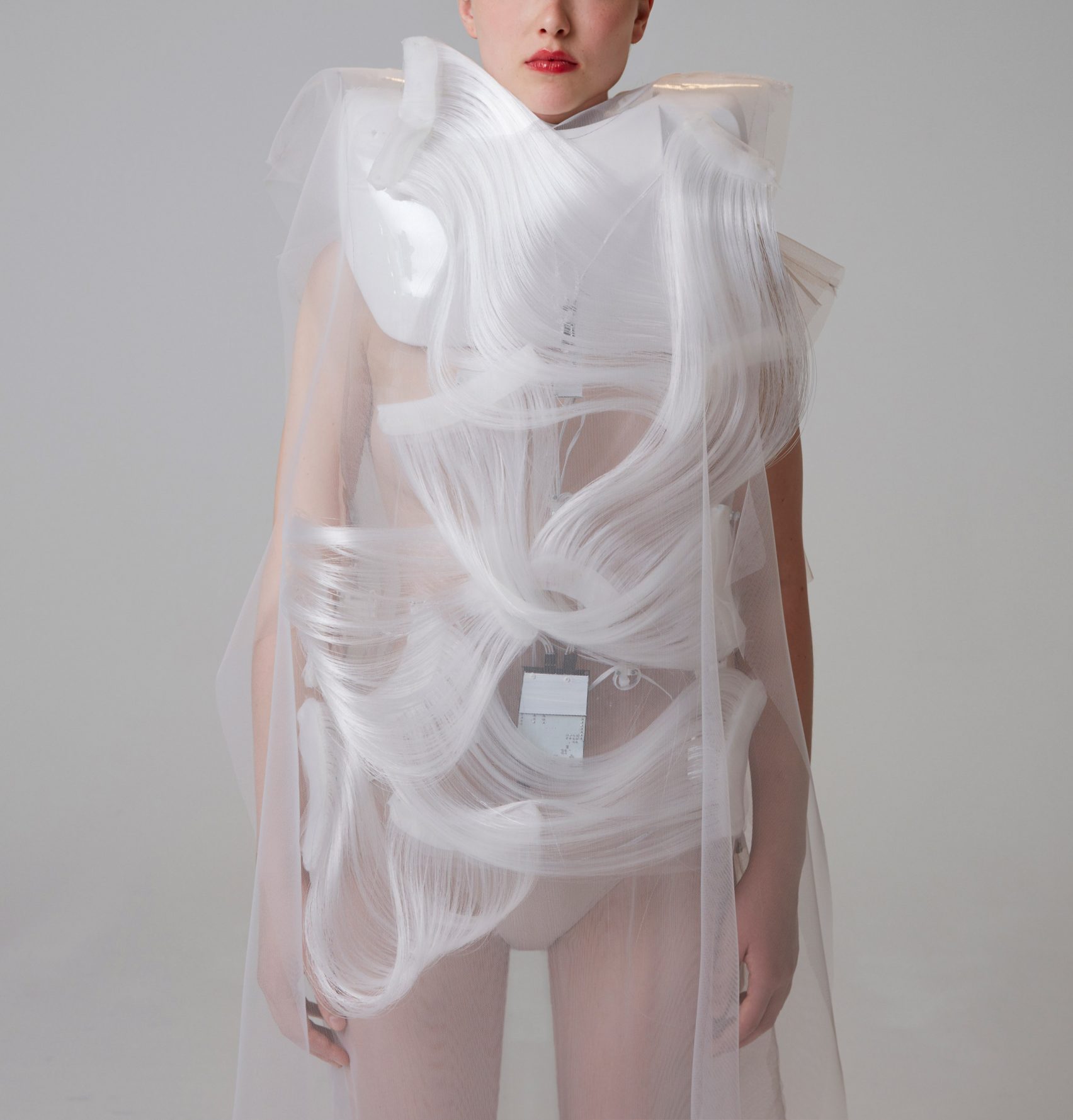www.dezeen.com: Fashion designer Ying Gao has created a collection of robotic dresses, with fibrous panels that delicately twist and curl when they identify strangers nearby.
The Possible Tomorrow's collection is inspired by Gao's interest in the notion that clothing is often seen as a protective barrier.

4 comments:
These dresses are so, so cool! I am amazed with how developed technology within garments and costumes have come in the past few years, and I am so excited that there are fashion designers who are doing more than putting LEDs, etc. in t shirts. Ying Gao's new designs are particularly aesthetically pleasing because of how whimsical that fabric and materials that were chosen are. The use of white thread and chiffon-looking white fabric is fantastic, because it allows you to see the movement and motors of the pieces without mixing up too many colors or patterns. I also love the idea of security that Gao has used to inspire the designs. I think that there has been a sense of being overly-private and yet being overly-in other people's faces in recent years, and these dress designs somehow are able to speak to that social oxymoron.
I love the idea of these dresses, and the overall concept of brining the idea of protection and decoration together in a garment. That being said, the way these dresses were presented makes the models almost look constrained or trapped, covered in these writhing white shapes and a ghostly outline of a dress-like form. I understand the high fashion, avante garde and almost art like concept of the dresses, but it made me a little unsettled seeing the figures standing presented in such a stiff and rigid way, with a colorless environment and clothing. Obviously, this was the intent, to focus on the movement and changing forms of the clothing rather than on the model's appearance or motions or the colors of the background, but it's an observation I feel impacted the way I viewed the garment itself. It in no way took away, however, from the awesome technology being used. I can still appreciate how cool and innovative these pieces were, and they have so many possible applications for theatrical and film costumes to move and change over time.
I am really intrigued by the concept of this dress. I love that the fibers of the fabric is programmed to move when a stranger it does not recognize approaches whomever is wearing the dress. It is actually incredibly amazing that the fibers can move the dress but also can recognize a person and know to move or not if the person is known. The creator of these costumes comments on society’s obsession with security and the restrictions of our own emancipation. It’s inspiring to think that artists, specifically costume designers, are able to make comments like this of society using not only their own art but today’s development of science. Also the exposure of the woman’s skin that wears this costume makes her vulnerable and yet the automated dress can protect her by recognizing strangers. I am curious if there a reason behind the color of the dress. Did the artist chose white because like the vulnerability of nakedness, the wearer is innocent and vulnerable? Or was it the easiest color to coexist with the programmed fibers?
These garments are simply elegant. It’s very intriguing that the dresses only move once for each individual person. It really twisted the norms of society that things are supposed to work for those familiar to them. For example you would never expect to get special treatment at a restaurant when you have never been there before. Yet if you know the owner well and are a regular at a restaurant, you might get something extra. These dresses are particularly special because they are a once in a lifetime experience. Once you cause them to move, they will never move again under your touch. I love the idea that the designer presents, saying that they are “anti-security” moving under the touch of a stranger, but not of someone it already knows. I wonder what the effect would be if these dresses were presented to a group of people without telling them the secret. How would they feel about other people being able to get the dress to move after they no longer can? It would be a very interesting social experiment.
Post a Comment